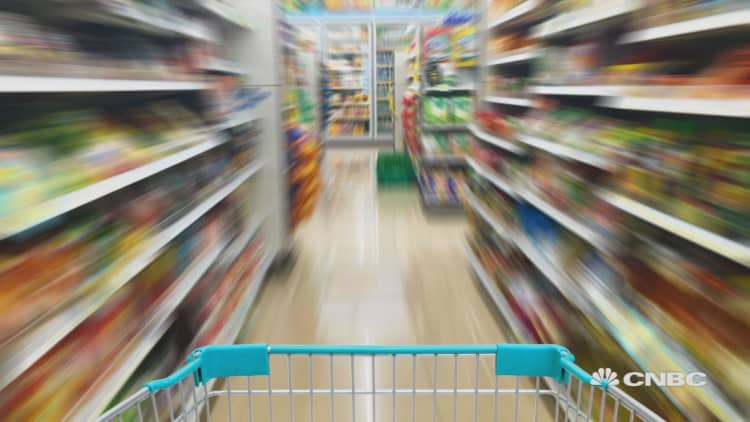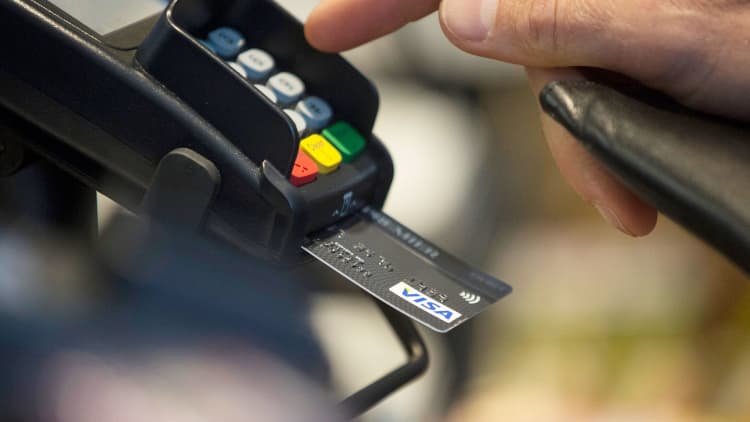
Those few unplanned purchases you made this week? Keep it up and your yearly tally from those spontaneous moments could reach $5,400 annually.
That's how much the average U.S. consumer spends each year on impulse buys, according to a new survey by Slickdeals.net. The study of 2,000 consumers shows they make three of those purchases a week, adding up to $450 a month and $5,400 per year.
Most of the spur-of-the-moment outlays go toward food, with 70.5 percent of respondents saying that category was the major culprit. (See chart below for the top five.)
(Source: Slickdeals)
At the same time, 85 percent of survey respondents said their impulse purchase involved taking advantage of a deal or discount.
"There's an element there of opportunistic purchasing," said Josh Meyers, Slickdeals CEO. "So [part of it] is taking advantage of a good deal."
While shopping — impulsively or not — can be fun, the consequences might not be so great if you didn't budget for it.
Total household credit card debt reached more than $1 trillion at last count, according to January data from the Federal Reserve. On a per-person level, the average consumer has about three credit cards and a total balance of $6,375, up nearly 3 percent from a year ago, recent data from Experian show.
If you're among those who struggle with impulse shopping and it's contributing to financial woes, there are some ways to rein yourself in.
For instance, before you head to the checkout with your impulse buy, whether in a store or online, take a minute to ask yourself whether you really need the item.
"Ask yourself, 'Is this essential? Would I purchase it anyway?' If not, wait a day and then decide if it's a purchase that makes sense," said Meyers.
If it's something you would purchase anyway — say, a gift or household items — it's still worthwhile checking to see if it's really the lowest price you can get.
"If you're in a store, and you get on your smartphone and find a lower price somewhere else, you can ask the store to match the price you're seeing," Meyers said.
If you're shopping online and see a great price, make sure you take shipping and handling costs into consideration before you hit the purchase button. Doing a little research might reveal a better overall deal elsewhere.

You also should check on return policies. If you end up suffering from buyer's remorse, you could end up paying a restocking fee or other expense involved in returning an item — whether online or in a store. In other words, that impulse purchase could end up costing you money even if you return it.
Meyers also suggests that impulse buyers try refocusing their energy.
"Harness the urge to impulse shop and use it to save money," he said. "Satisfy that urge by finding great deals on things you know you need."
And as for those impulsive food purchases? If they typically happen at the grocery store, making a shopping list and sticking to it is one way for extras not to end up in your shopping cart.
Additionally, don't battle nature.
"When you're hungry, there are strong biological impulses at work," Meyers said. "Stick to adage: Don't go to the grocery store when you're hungry. Leave home with a full belly."
More from Personal Finance:
How to clean up financial clutter
Fees could sink your retirement savings. Here's what to do about it
Here's what Americans do with their tax refunds


